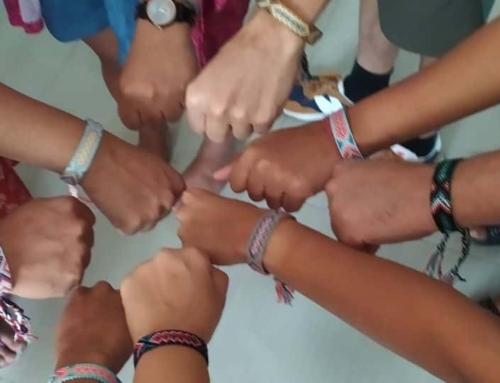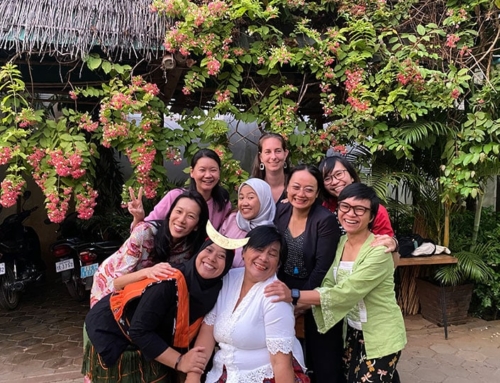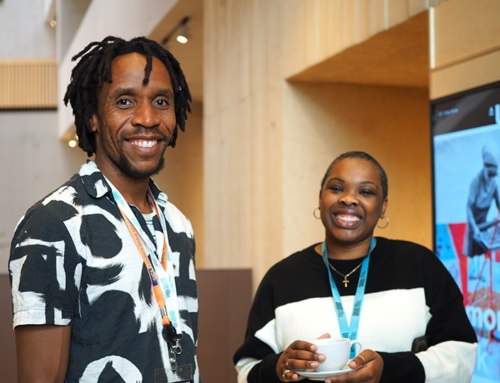Our Head of Conservation Programmes, Julie Thomas, joined the Synchronicity Earth team in January, 2023. In this interview, Jessie Birabil and Jim Pettiward talk to Julie about how she started out in her conservation career and hear how her experiences working in diverse regions and communities around the world have shaped her attitudes towards conservation. And we ask Julie what she thinks the conservation sector is doing well, and where it needs to improve.
Q: What made you want to get involved in nature conservation?
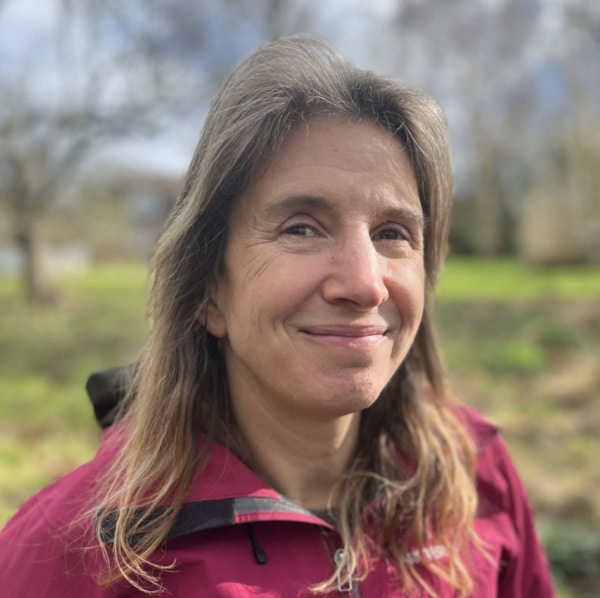
Julie: I grew up in a tiny village in Somerset, spending much of my childhood out in nature playing in the fields and woodlands. I spent a lot of time with my grandparents, walking through the fields foraging and learning about why nature was important to them.
But when I was about nine or 10, I started to see changes in the world I knew. Local farmers in our area began to shift from small-scale farming to larger, industrial methods of agriculture in a very short time. Many of the fields and places that I had walked in and loved with my grandparents were ripped up. Our local environment was transformed from beautiful ancient orchards and wildflower meadows into two giant, featureless fields, producing crops, but devoid of wildlife.
As farming techniques changed and became more mechanised, we also suffered from the aircraft that regularly sprayed the crops with pesticides. I remember the health problems this caused my dad – his face would swell up. Seeing this transformation really affected me as I was growing up. I was so frustrated and angry that someone could come in and do this to the beautiful place I’d grown up in, and that we simply had no say in what happened to it because we were not landowners.
That was a turning point for me, the moment I knew I wanted to work to protect the nature we were losing.
Q: Did you experience any challenges when you were starting out in conservation?
Julie: I think getting into this area of work is always challenging. When I was young, my family didn’t know anyone who worked in the environment sector. We were a low-income family and conservation just wasn’t the kind of career that you went into.
I think there have always been barriers for people from certain backgrounds, for people who can’t necessarily afford to do voluntary work or unpaid internships to get a foot on the ladder.
I was very fortunate in having the support of the small community I grew up in. Through the funds I was able to raise from my community, I was able to go to Zimbabwe after finishing my A-levels. The Zimbabwean government were looking for people to teach biology and agriculture and that’s how I first developed a connection to that country.
Later, when I was doing my Master’s in Environmental Studies and wanting to get more on the ground experience, it made sense to go back to a community that I’d lived in for a year. People knew me there, and it would be easier to carry out participatory research. I was fortunate to get some funding from the British Council for my research, but it was challenging. Without the original support from my community, or funding from the British Council, I would never have been able to get my first critical experience in conservation.
Q: Is there a particular person in conservation that you’ve admired, or been inspired by in your career?
Julie: Throughout my career, I’ve drawn huge inspiration from the individuals I’ve met along the way: whether that’s people on the frontline of protecting biodiversity, or my own grandmother’s understanding of the power of community action to create change for low-income mining families.
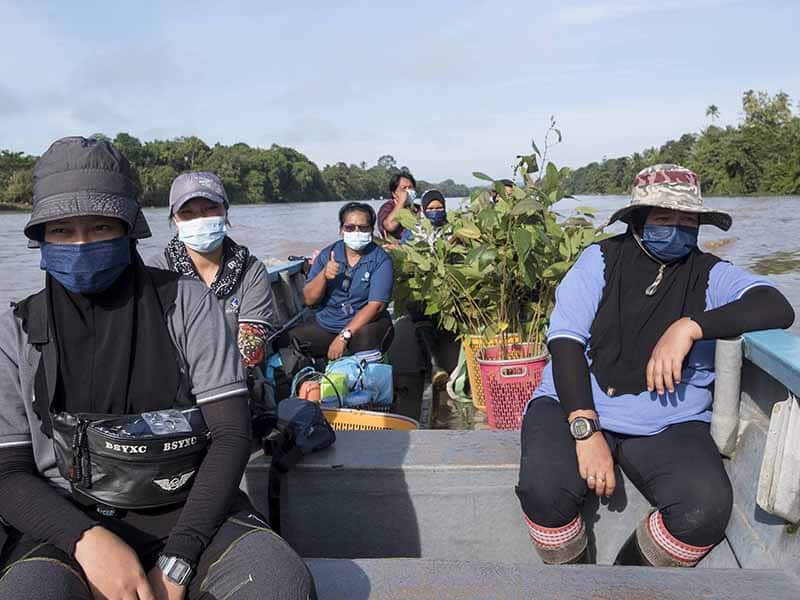
Working on the frontline of biodiversity conservation – members of Synchronicity Earth partner HUTAN’s restoration team. Image © Alexandra Radu
I’m always in awe of their dedication, working under sometimes extremely tough conditions, and often in voluntary or unpaid roles, often at great personal risk. I do recognise that it is so much easier for me to work in the environmental sector, sat here in an office in the UK – I’m not under those kinds of pressures and demands every day.
Q: Is there a particular region or community that you feel proud to have worked in?
Julie: One of my proudest moments came when I was working with pastoralist communities along the Ruaha river in Tanzania. This huge river flows through Tanzania, including through Ruaha national park, one of the most biodiverse places in East Africa. As well as its importance for wildlife, the Ruaha is a key source of electricity through hydropower and provides water for communities across the region. About 20 years ago, the river started drying up.
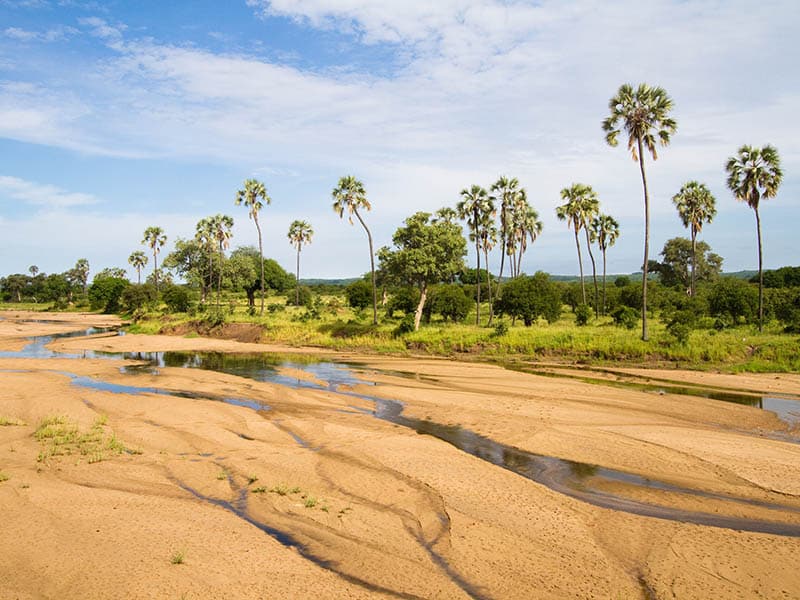
A sandy riverbed in Ruaha National Park, Tanzania. Image: iStock
I was involved in a project that was largely scientific, trying to understand why the river was drying up, and part of that involved working with communities in the region. The dominant narrative at the time blamed pastoralists for the drying up of the river. Pastoralist communities in Tanzania are marginalised and face lots of challenges and prejudice, from other sections of the population and from the government: they are often blamed for things that aren’t their fault.
Upstream from where the pastoralists grazed their animals, there were huge rice farms using vast amounts of water in very inefficient ways. But in any discussions within government, or even at local government level, the story was that there were too many cattle drinking all the water and the pastoralists needed to be moved on.
Our team worked together with local staff, and the local communities to share knowledge more widely. Sometimes in written form – translations in Swahili – but we also established a team of community video makers to allow local communities to tell their side of the story. Communities who were far apart could suddenly connect with others.
It was a wonderful moment to see communities who had previously been marginalised in the discussions finally being listened to by decision-makers and being supported to implement their own solutions.
Bringing science and traditional knowledge together and finding a means to share knowledge in that situation was a very powerful experience.
Q: Thinking about your career to date, can you give us your thoughts on what successful conservation looks like?
Julie: Listening to and understanding different perspectives before taking collective action is key. From the beginning of my career, I’ve recognised the importance of supporting community- led action. I began my career in local government working on Local Agenda 21, a global sustainable development plan agreed at the Rio Earth Summit in 1992. It was about creating local sustainability plans and getting people involved in thinking about how they could improve their local environment.
I realised that although the ambition was there, a lot of resources went into consultation but never filtered down from national to local government to implement what local people wanted to do. That led to a lot of disillusionment for local communities involved who’d been promised something different.
I think a similar thing often happens within some of the bigger conservation organisations and within the environment sector more broadly.
There are fine words about community-led approaches, but often it’s more like consultation and lip service, rather than resources flowing to communities who know how to use them most effectively.
But I think this is where we’re currently witnessing a step change, with growing global recognition that Indigenous Peoples and local communities are key to addressing the biodiversity and climate crises. The difference this time, is that it is coming with a proper financial commitment behind it. Of course, it remains to be seen whether these commitments will actually succeed in redistributing funding to Indigenous Peoples and local communities, making it less ‘top-down’, but it’s certainly a step in the right direction.
This is why Synchronicity Earth is creating opportunities for more local voices to be heard in international forums. It excites me to be with an organisation that’s helping support the growth of civil society at that level, while also supporting local action.
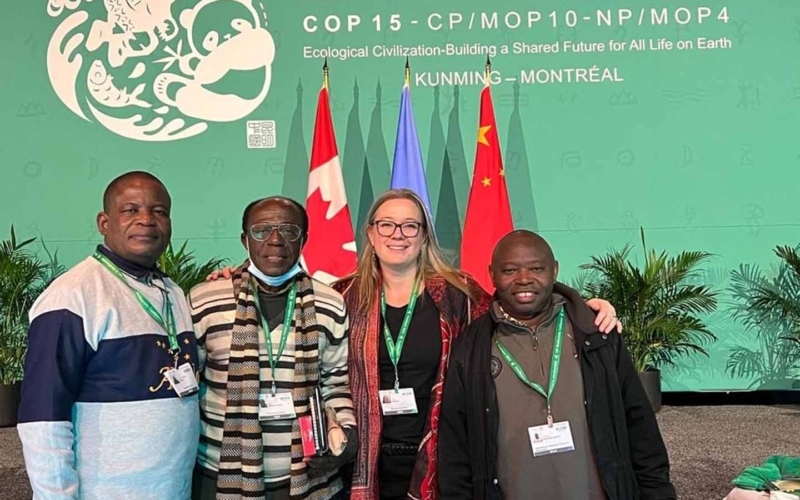
From left: Jean-Christophe Bokika (MMT), Dr Bihini Won wa Musiti (SE Congo Basin Affiliate), Synchronicity Earth Co-founder Jessica Sweidan, and Joseph Itongwa (ICCA Consortium) at the Convention on Biological Diversity COP15 in Montreal. Image © Synchronicity Earth
And I like the fact that Synchronicity Earth doesn’t take a prescriptive approach – it’s about creating long-term partnerships, not projects, and really listening to our partners, to what they want to do and providing funding that supports their ideas and their organisational development.
Q: Where do you think the conservation sector is not doing so well?
Julie: We need to make big efforts to ensure that access to nature and careers in conservation is open to all. From the start, there need to be opportunities for young children and young people to connect with nature, and particularly opportunities for people from low-income and ethnic minority backgrounds, who face considerable barriers, to be able to access nature.
Time spent playing, enjoying, and learning outside is vital in terms of helping people to make that connection with nature, but also in growing awareness of how critical nature is for people’s health, both physical and mental, and their well-being.
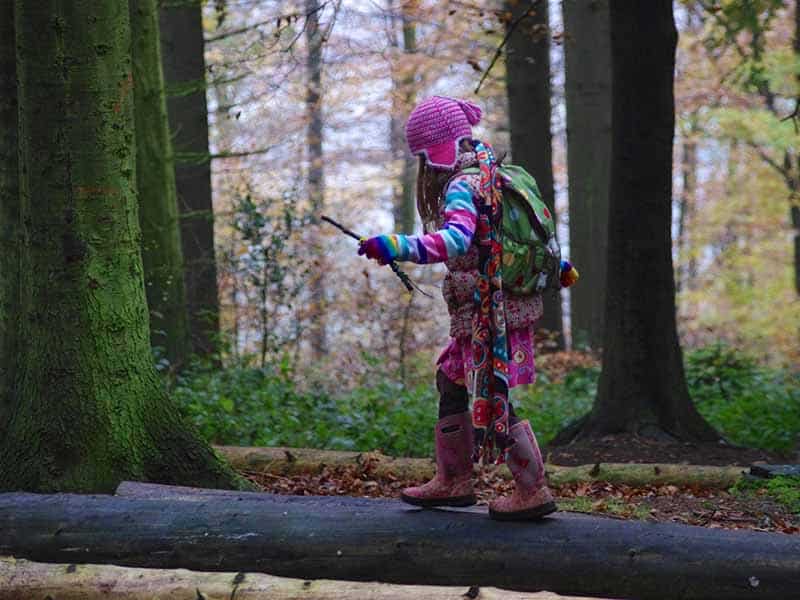
Time spent playing, enjoying, and learning outside is vital. Image: Shutterstock
Another thing holding the conservation sector back in the UK, I think, is that there is a lack of diversity in the sector, and consequently we don’t do a great job at listening to, representing or working on the issues that are important for low-income families and people from ethnic minority backgrounds. For example, in the UK, people from ethnic minority backgrounds are more likely to live in areas with higher levels of air pollution which is negatively impacting their health – but the environment movement doesn’t talk – let alone act – enough when it comes to these issues.
For us as a sector, we have a role to play in ensuring we are more diverse and busting the myths of what it means to work in conservation, and the kind of people needed in the sector.
There are some glimmers of light though! Initiatives such as Countryside for all, are working to address some of the barriers of access to the countryside, especially for youth from certain socio-economic and ethnic backgrounds. There are exciting urban youth projects creating green spaces in cities and connecting people from diverse backgrounds to those spaces, and initiatives such as Race for Nature’s Recovery and its use of the UK government’s Kickstart scheme, or placements through organisations like Voyage Youth, which is how you [Jessie] came to join us. These are all positive steps in the right direction.
Q: Talking about connecting people to nature, are there any examples from your own experience where you’ve seen how important it is to help people feel more connected to nature?
Julie: Around a decade ago, while I was working for WWF, I was doing some work looking at how China was investing and trading with Africa, and how it could improve on its environmental standards. As part of this work, we wanted to find a way to help Chinese bankers connect with the place they were investing in.
So, we took a group of Chinese bankers on a ‘study tour’ to Mozambique to help them understand what good investment could look like. As part of the experience, we’d arranged for them to take a diving trip to a nearby island fringed by an incredible coral reef. Although they’d all enthusiastically signed up for the trip, the head of the delegation came to us literally the night before and told us that they really wanted to do the trip, but none of them could swim!
So, the night before the trip saw me scrabbling around at the last minute trying to find life jackets, so they could at least do some snorkelling!
On the day itself, the sea was quite rough, and I spent the day in the sea counting the number of orange life jackets bobbing around on the surface. But despite these issues, the trip turned out to be very powerful.
The group enjoyed the experience so much that they asked to add in another day to explore the island and see more of its natural beauty. That was really the moment that everything shifted for us – the experience completely changed our relationship. Following that trip, they agreed to work on new green investment guidelines for the financial sector.
The chance to get closer to nature in a place they were planning to invest in felt like a key moment for many of these bankers, something they talked about a lot afterwards.
I guess it shows that – wherever and whoever you are – getting close to the thing you’re trying to protect is incredibly important.
Q: Finally, what does that connection to nature mean to you today?
Julie: People used to be much more conscious of the seasons and how they impacted their lives, recognising the signals and cues of when to plant. My mum used to always listen out for the first cuckoo of spring, which meant it was getting a bit warmer, knowing that might be a good time to start planting certain things out. It feels like some of this connectedness has been lost, particularly in the UK. Today, very few people will hear the familiar voice of the cuckoo: since I was a child the UK has lost over three quarters of its cuckoo population.
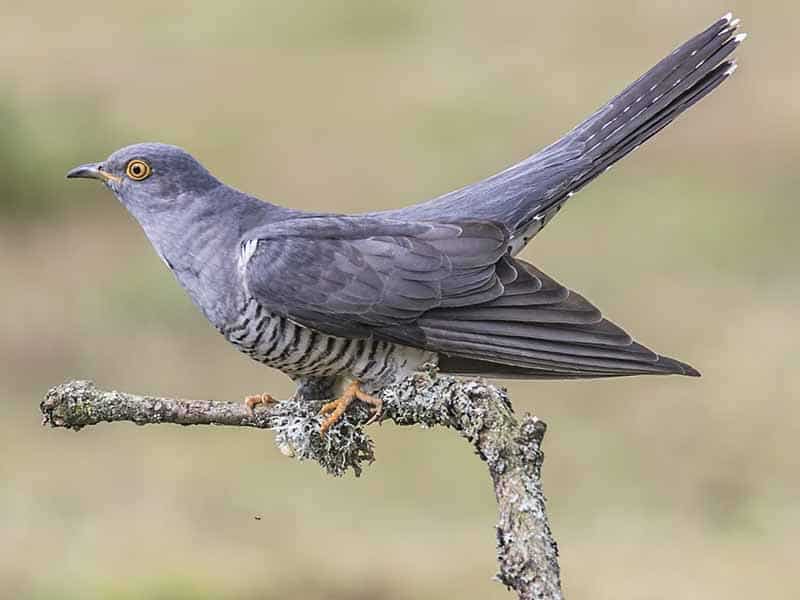
In the last few decades, the UK has lost over three quarters of its cuckoo population. Image: iStock
For me, personally, I feel most at home when I’m outdoors. Most of the activities I enjoy involve the outdoors, whether that’s hiking, sailing, or gardening. I now have a large garden, so I’m able to experiment with rewilding, just letting things grow and become wildflower meadows, and I’m also growing some of my own food, a small, personal step I can take to protect nature. Recognising the way global food systems put so much pressure on the environment makes me appreciate the food I can grow that much more.
*This interview has been edited for length and clarity


